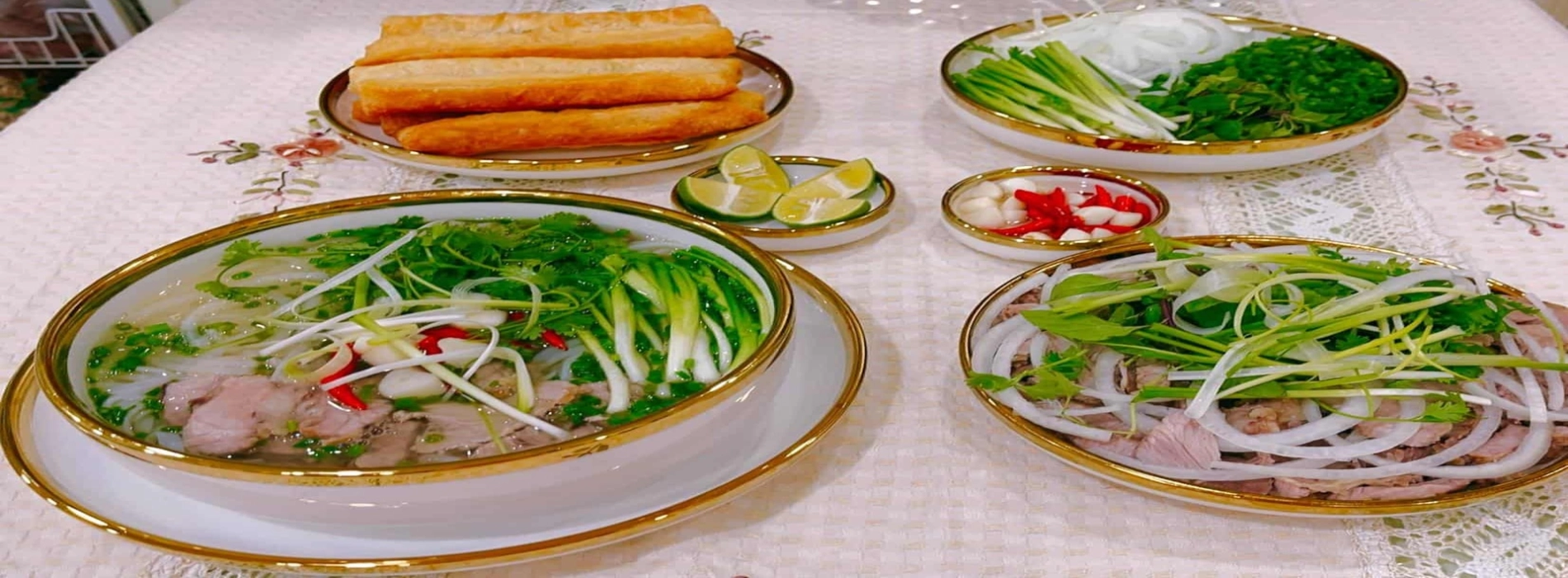
Vietnamese people are always proud to introduce their friends worldwide to the country's rich and flavorful cuisine. Among the many dishes, Pho has become a "Vietnam culinary ambassador," contributing to honoring their culture with international friends. The flavor of this dish encompasses all the quintessential elements of Vietnamese cuisine.
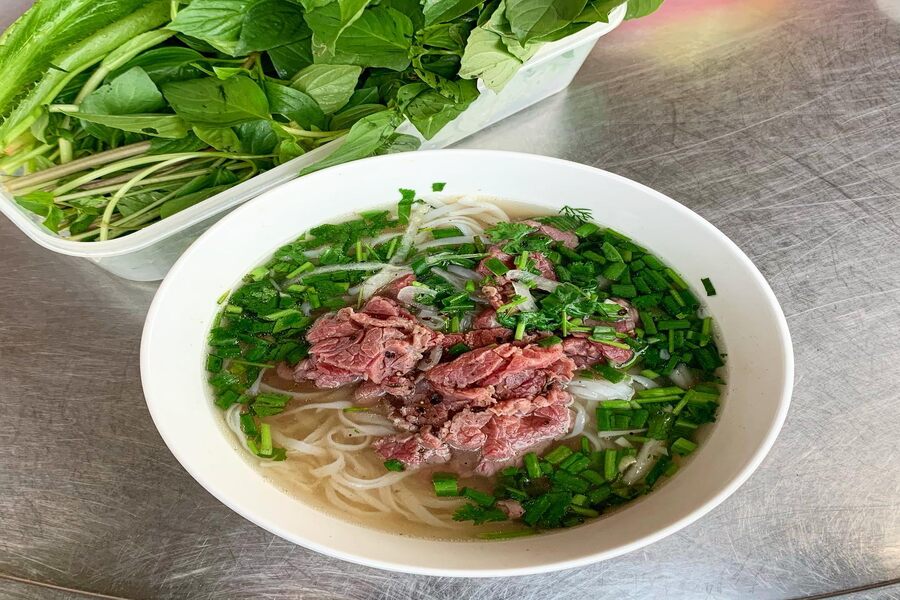
A simple bowl of beef pho
Many international tourists visiting Vietnam, also want to experience a steaming bowl of Pho at a local eatery besides exploring famous attractions. This dish is so special that it's no longer referred to by the English word "noodle" but has its entry in the dictionary as.
Have you known about Pho? Whether new to it or already familiar, read this article as Asia King Travel introduces you to more interesting facts about this dish.
Many theories about the name and origin of Pho. Generally, it originated around the 19th and 20th centuries in Northern Vietnam.
A view that the dish originated from a Cantonese dish. Dish’s name when abbreviated in Vietnamese sounds similar to "Pho." Another opinion suggests it initially stemmed from a stir-fried buffalo meat dish, later replaced with beef and added rice noodles.
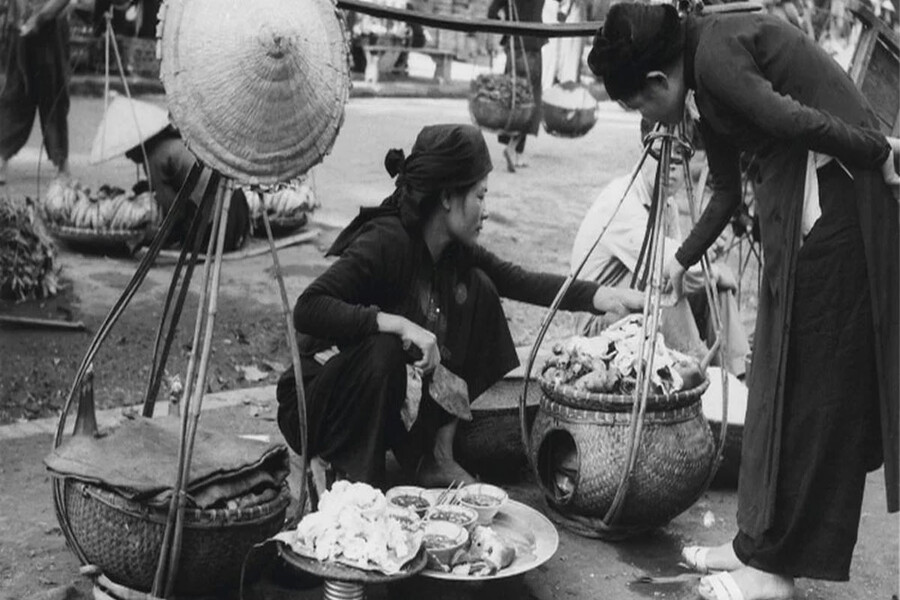
Preparation and selling methods of the meal have changed significantly over time
Some people even say the dish originated from the French. The pot-au-feu (a beef stew dish) was adapted by Vietnamese people using local ingredients, and it said in short "feu" sounded like "Pho".
However, some writers, poets, and historians have researched and agreed Pho first appeared at O Quan Chuong in Hanoi. During the French colonial period, discarded beef bones were gathered in O Quan Chuong. The locals used them to simmer and create the dish from there.
Nowadays, there are many variations and preparations of Pho. However, in this article, Asia King Travel will focus on beef one - the most original and well-known version. The ingredients for cooking the dish include:
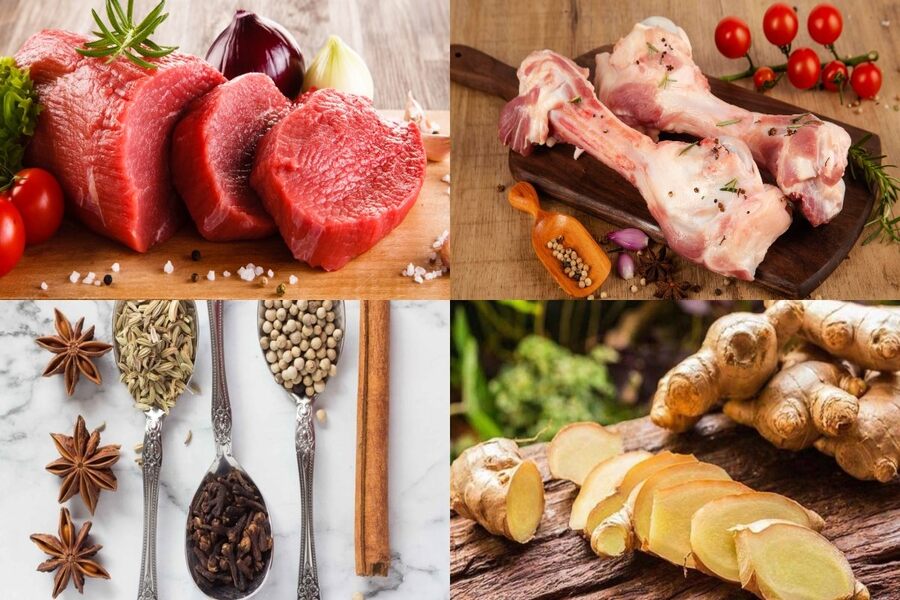
Pho varies from place to place, but basic ingredients remain consistent
Broth preparation is the most crucial step. To achieve a sweet broth, you need to simmer a large amount of beef bones. Before simmering, remove all the meat from the bones, cut them into pieces, and cook for 10-12 hours. During cooking, continuously skim off the foam and add more water until the broth becomes clear.
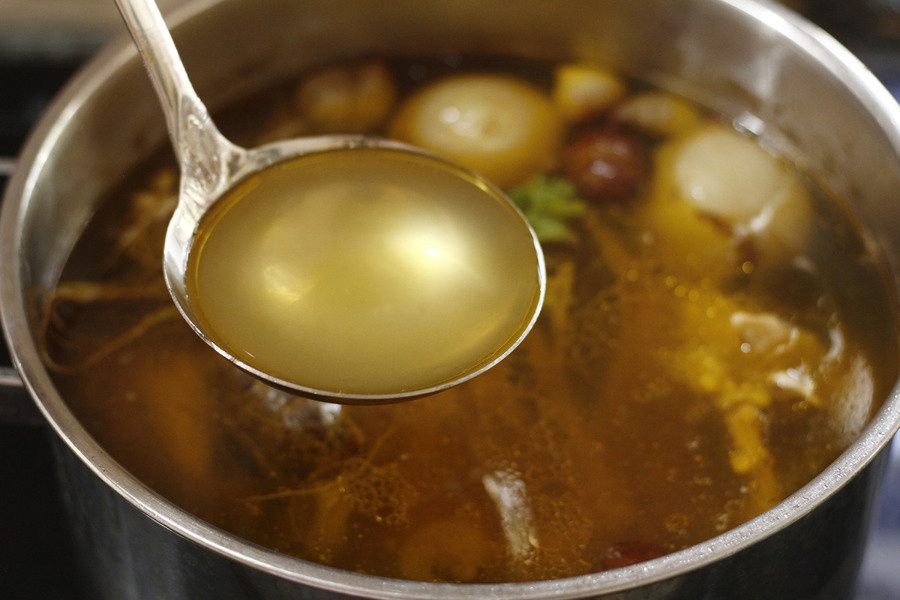
Making delicious broth is truly a labor of love
Add lightly grilled ginger and onion before the broth boils. Place star anise, cinnamon, shallot, and cloves in a cloth bag and immerse it in the broth. Once the broth is clear, reduce the heat to prevent sediment and extract the sweetness from the bones. Finally, add the seasonings (salt and fish sauce for an extra kick). Each restaurant has its secret spice recipe.
First, briefly dip the desired amount of rice noodles in boiling water and place them in a bowl. Then, arrange thinly sliced rare beef, green onions, and cilantro aesthetically. Pouring the broth is also a meticulous process.
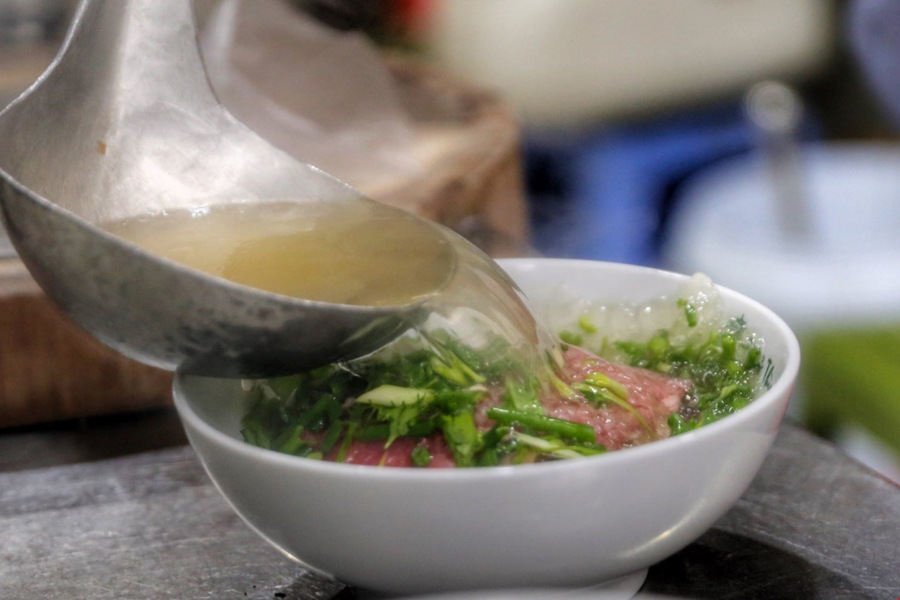
Beef cooked in simmering broth becomes tender and flavorful
The broth must be evenly distributed over the noodles, while simultaneously cooking the beef slices and preserving the vibrant green color of the herbs. Thus, a bowl of refined beef Pho is complete. When enjoying, squeeze some lime, also add a spoonful or two of vinegar and chili sauce according to your taste.
Suggested for you: 5 best Vietnamese stir-fried dishes honored by Taste Atlas
Hanoi has the highest concentration of Pho restaurants in the country. Establishments ranging from luxurious to makeshift can be found on almost every street, alley, and even on street carts throughout Hanoi.
Hanoians can eat Pho all day long, for breakfast, lunch, dinner, and even for a late-night snack. They can have the dish multiple times a month, year, and for many years. No Hanoian has ever declared they no longer want to eat it.
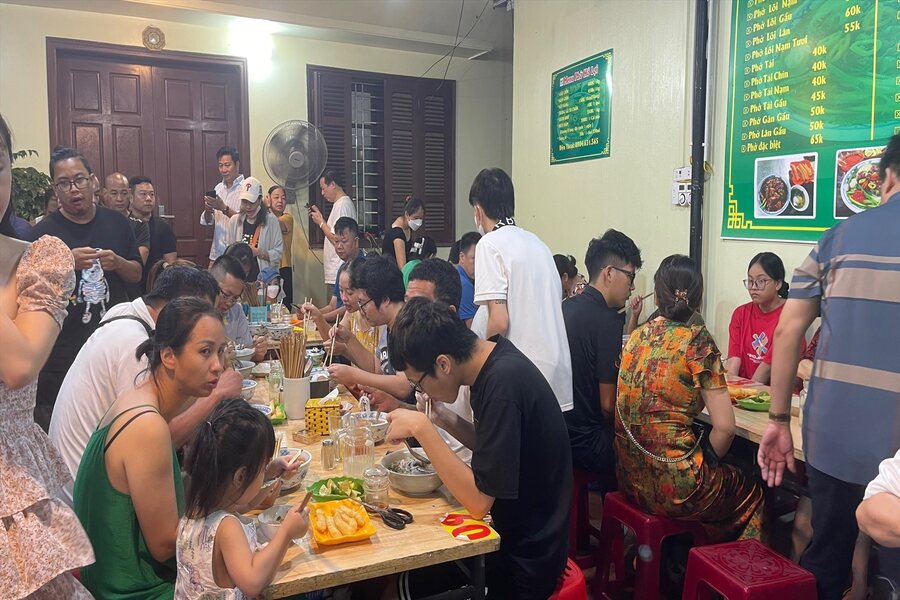
Hanoi can also be considered the capital of Pho. Source: Lao Dong Newspaper
Northern Vietnamese Pho noodles are typically made in a wide and flat shape. Clear broth is the key element to making a delicious bowl in the North. Moreover, it should leave a lingering sweetness after tasting.
A famous Pho restaurant in Hanoi popular with locals and foreigners, is Pho Bat Dan at 49 Bat Dan Street. This family-run restaurant has maintained the traditional flavor for 50 years. Alternatively, the 10 Ly Quoc Su Street brand is famous for delicious beef shank bowl.
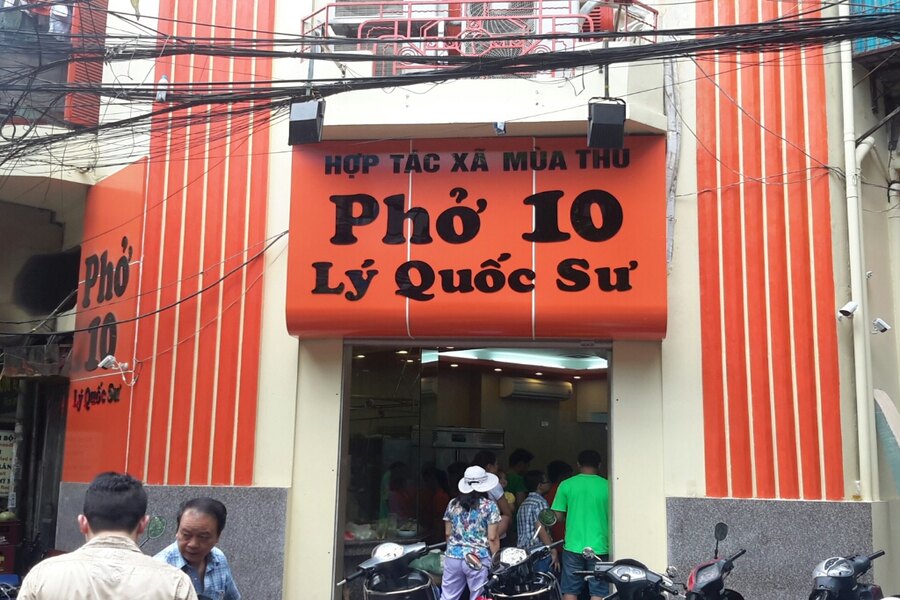
10 Ly Quoc Su Street at the main address is always packed with customers
Actually, you can easily find at least one incredibly popular Pho eaterie in every neighborhood in Hanoi. Just try it once, and you'll become a regular before you know it!
Nam Dinh Pho noodles are unique, with thin, delicious, and soft strands, different from those in other regions. The beef is thinly sliced and pounded, then quickly dipped and removed from the broth to maintain its tenderness, freshness, and nutritional value...
And comes to the broth, it's often considered a "family secret." Many families in Nam Dinh have a long-standing tradition of making Pho. People usually keep their broth recipes confidential, passing them down only to the next generation within the family.
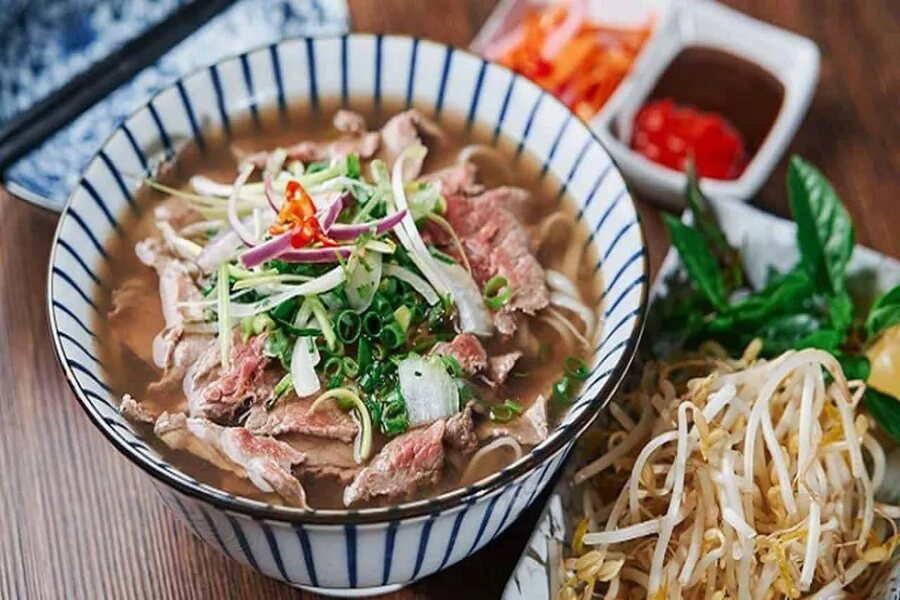
Nam Dinh rare beef Pho is foodies-favorite
If you have the chance to visit Nam Dinh City, stop by Pho Cu Tang at 23 Hang Tien Street. The current owner is the grandchild of the original owner. The restaurant has two famous dishes: pan-fried beef and beef stew Pho.
Pho made way to Central and Southern Vietnam in the mid-1950s. North Vietnamese people migrating to the South in 1954 brought recipes with them. The dish began to have the diversity it has today.
Southern Vietnamese Pho noodles are thinner and more delicate, resembling vermicelli. The broth usually doesn't contain MSG like in Hanoi and has a slightly cloudy appearance due to the addition of a bit of beef fat. Therefore, besides being sweet and well-rounded, Pho in the South also has a hint of richness.
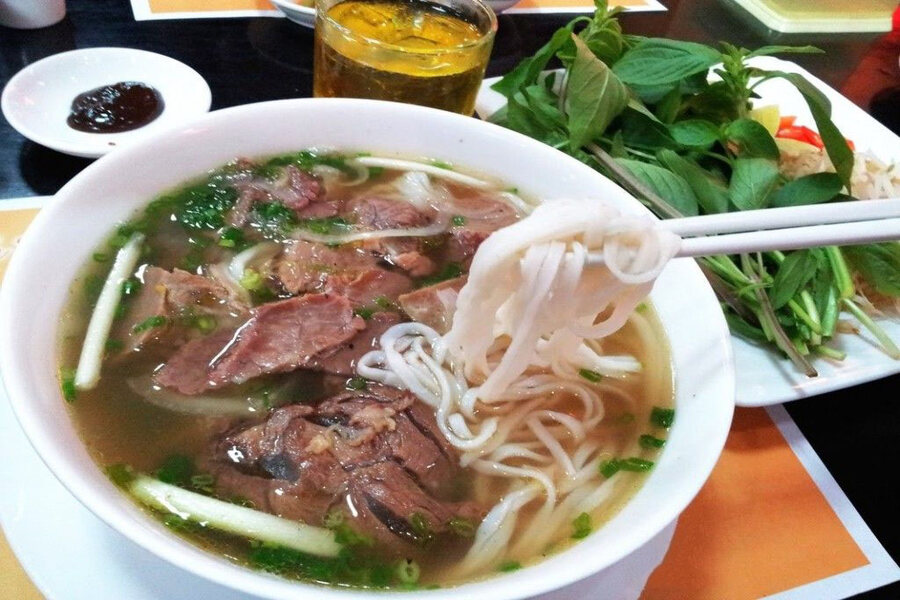
Saigon Pho often has more full bowls than the North
People in the South also like to order additional side dishes with their Pho. Each bowl of Pho often comes with a small separate bowl of broth, and there might be extra meatballs, poached eggs, or even congealed blood pudding.
Landing in Ho Chi Minh City and looking for a bite? Check out these restaurants. Pho 2000 at 1-3 Phan Chu Trinh Street marked the event US President Bill Clinton stopped by there in 2000. Phu Vuong Restaurant at 120 Nguyen Thai Binh Street attracts visitors with accomplished preparation, from the main to side dishes. The city also has countless spots just like Hanoi.
Pho has now become a distinctive cultural feature of Vietnam. Many countries have sold this awesome dish to cater to food enthusiasts, but none taste better than in their homeland. Come to Asia King Travel for a Vietnam tour and try all kinds of Pho!
Suggested for you: Top 10 unique Vietnamese dishes should not be overlooked